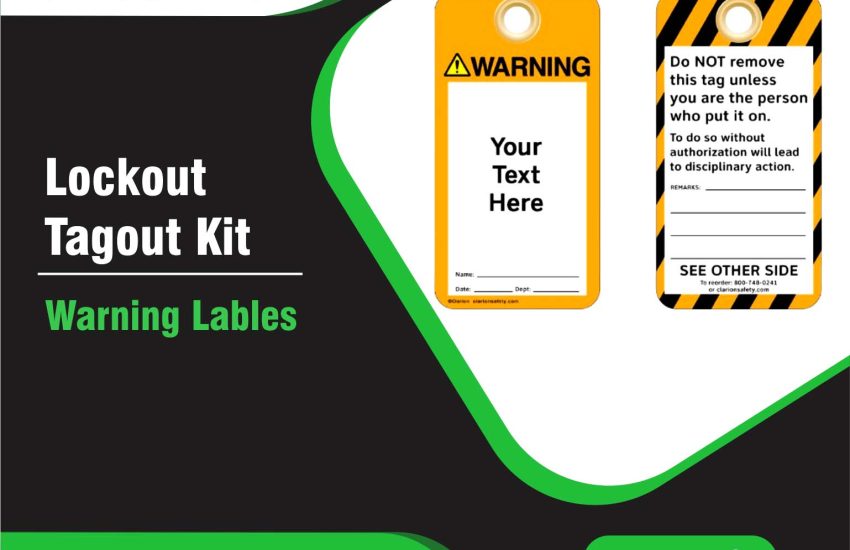Warning Labels are essential for ensuring safety in industrial, commercial, and residential settings. They communicate potential hazards, dangers, and necessary precautions, helping to prevent accidents and injuries. In this article, we will explore the specifications, types, and benefits of warning labels, along with SEO-friendly keywords that can boost visibility and improve safety standards.
What Are Warning Labels?
Warning labels visually alert people to potential risks, hazards, or unsafe conditions in their environment. You will commonly find these labels on machinery, equipment, electrical panels, and hazardous substances. They play a vital role in reducing accidents, ensuring compliance with safety regulations, and providing clear communication about the nature of hazards.
Why Use Warning Labels?
Warning labels are crucial for workplace safety and regulatory compliance. Here’s why they should be used in every facility:
- Enhanced SafetyWarning labels help reduce the risk of accidents by clearly marking hazardous areas or conditions. Workers, visitors, and others can quickly identify dangers like high-voltage zones, moving machinery, or flammable materials. This enables them to take the appropriate precautions and avoid harm.
- Compliance with Safety StandardsSafety regulations from organizations like OSHA (Occupational Safety and Health Administration) and ANSI (American National Standards Institute) mandate the use of warning labels. Following these guidelines ensures compliance and minimizes the risk of fines or legal liabilities.
- Clear CommunicationWarning labels provide instant recognition of hazards without the need for lengthy explanations. With proper symbols, colors, and wording, they make hazard recognition quick and efficient, ensuring universal understanding.
- Reduced Liability and RiskWhen you place warning labels correctly, they help prevent workplace accidents and reduce the likelihood of injury claims or lawsuits. As a result, you can foster a safer environment and lower insurance premiums and other related costs.
Specifications of Warning Labels
When selecting warning labels, consider the following specifications to ensure they are both effective and durable:
- Material and Durability
- Weatherproof and Durable: Labels should be made of high-quality materials such as vinyl, polyester, or aluminum. These materials resist UV exposure, rain, and extreme temperatures, ensuring long-lasting use.
- Chemical Resistance: In environments exposed to chemicals, choose labels made from materials resistant to oils, solvents, and other harsh substances.
- Adhesion Quality: The adhesive backing must be strong enough to ensure the label stays in place, even in high-traffic areas or on rough surfaces.
- Size and Visibility
- High Visibility: Use bright colors like yellow, red, and black to create a high-contrast design that makes labels visible from a distance.
- Readable Font Size: The text on the label should be large enough for easy reading. Choose simple, clear fonts to ensure legibility.
- Reflective or Glow-in-the-Dark: Some labels feature reflective or glow-in-the-dark properties to maintain visibility in low-light conditions.
- Design and Symbolism
- Clear Symbols: Warning labels should feature internationally recognized symbols (e.g., lightning bolts for electrical hazards or skull-and-crossbones for toxic substances) to quickly communicate the hazard.
- Clear Wording: Use straightforward language and avoid jargon. This ensures the label’s message is clear and easily understood by everyone.
- ISO and OSHA Compliance: Ensure that labels comply with safety standards such as ISO 7010, ANSI Z535, and OSHA guidelines for regulatory compliance.
- Adhesive Options
- Permanent Adhesive: Labels with permanent adhesive are ideal for high-traffic areas, providing a long-lasting bond.
- Removable Adhesive: Choose labels with removable adhesive for temporary applications or environments where labels may need to be replaced without leaving residue.
- Temperature and Environmental Resistance
- High-Temperature Resistance: Ensure the labels can withstand high temperatures, particularly in industries like manufacturing or construction. Place warning labels on equipment to inform workers of potential hazards.
Types of Warning Labels
Warning labels come in various types, each designed for specific hazards:
- Electrical Hazard LabelsThese labels warn of electrical equipment or wiring that could cause electric shock or electrocution. Symbols like lightning bolts are commonly used to indicate electrical hazards.
- Chemical Hazard LabelsChemical hazard labels alert individuals to the presence of hazardous chemicals, such as flammable, corrosive, or toxic substances. These labels often include symbols like the skull-and-crossbones, as well as safety information to prevent exposure.
- Machinery Hazard LabelsPlace machinery hazard labels on or near equipment to warn workers about moving parts or dangerous pinch points that could cause harm.These labels help ensure the proper safeguards are in place to prevent injuries.
- Fire Safety LabelsFire safety labels identify fire hazards, including flammable materials and areas with fire alarms or extinguishers. These labels typically feature flame symbols and are designed to attract attention.
- Slip, Trip, and Fall Hazard LabelsThese labels are used in areas with slippery floors or uneven surfaces. They alert people to potential fall hazards, helping prevent injuries.
Key Benefits of Warning Labels
- Improved Workplace Safety: labels make hazards more visible and understandable, which helps to reduce accidents.
- Regulatory Compliance: Labels ensure compliance with safety regulations, which helps prevent fines and legal issues.
- Easy Hazard Identification: With clear symbols and colors, labels enable workers to quickly identify risks, ensuring a safer environment.
- Increased Awareness: Warning labels foster a safety culture by continuously reminding workers of potential dangers.
- Cost-Effective: Warning labels are an affordable safety solution that significantly reduces accident risks.
Conclusion
Warning labels are a vital part of any safety program. They provide essential information about potential hazards and help ensure the safety of workers, visitors, and the public. By selecting the right materials, designs, and types of labels, businesses can improve safety, reduce risk, and comply with regulatory standards. Whether dealing with machinery, chemicals, or general safety, warning labels help safeguard individuals while fostering a culture of awareness.
To maximize the effectiveness of your warning labels, consider key factors like material durability, visibility, and compliance with safety regulations. Properly implemented warning labels will result in a safer workplace, reduced liability, and better operational efficiency.


